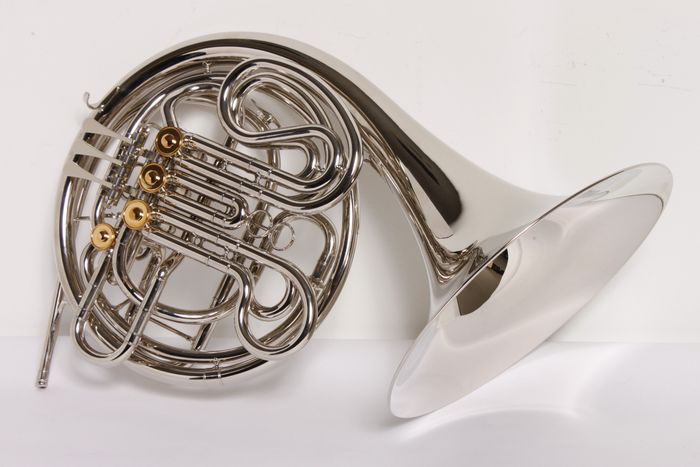The history of the double French horns is very interesting and intriguing. Read our guide for more facts and information…
16th century operas first saw the horns being played as musical instruments. Later many changes and modifications were introduced to the original ones in the 17th century. This marked the birth of the French horn or the cor de chasse.
The history of the musical instruments tells us that the early pieces were monotone instruments. It was only later in 1753 when Hampel, a German musician invented the crooks that created the movable slides allowing varying lengths, helping the user change the key of the horns.
A technique called stopping was later developed after which it was observed that the tone of the French horn was lowered when the user placed his hand over the bell.
The modern French horn and the double French horn was in the nineteenth century when valves replaced the crooks. Heinrich Stoelzel and Friedrich Blühmel are the two people who are given credit for inventing the valve for the French horn.
Based on the ‘Brief History of Horn Evolution’ the credit for inventing the double French horns in the 1800s was given to Fritz Kruspe and Edmund Gumpert. The German inventor, Fritz Kruspe is said to have combined the pitches of the F and B- flat horn in the year 1900.
Compensating Double Horns
The early double horns relied on a system of tubing whereby there was variation between the lengths of the F and B-Flat horns. Nowadays they are called ‘compensating’ double horns to identify them separately from the full double horns. Although the latter are more popular yet the compensating double horns are also used by players. Although some hornists find it relatively difficult to play in tune yet many prefer them due to their light weight and less tubing.
Full Double
The structure of this horn is such that two complete horns are incorporated into one instrument which shares the same bell and lead pipe.
The instrument also has a short tubing for the B flat horn as well as long tubing for the F horn. The thumb valve is used to determine if the air will pass from the F or B flat horn. However the air will not pass through both of them at the same time as in the compensating horn.
Furthermore in the full double horn there are 2 sets of slides for the three valves. This allows the F slides to be completely separate and disjointed from the B flat horn slides which are never used together.
The double French horn has undergone many changes over the course of its history and these changes have allowed the French horns to be made player-friendly, convenient and easy to use and play.





